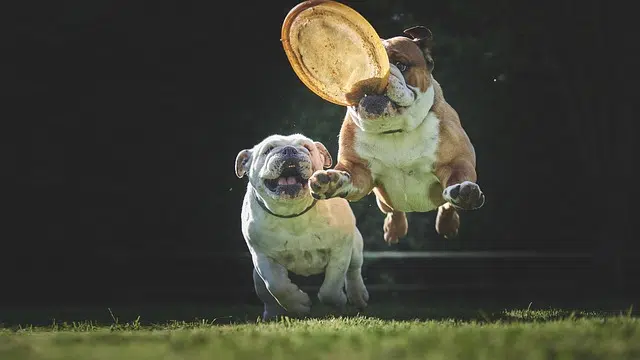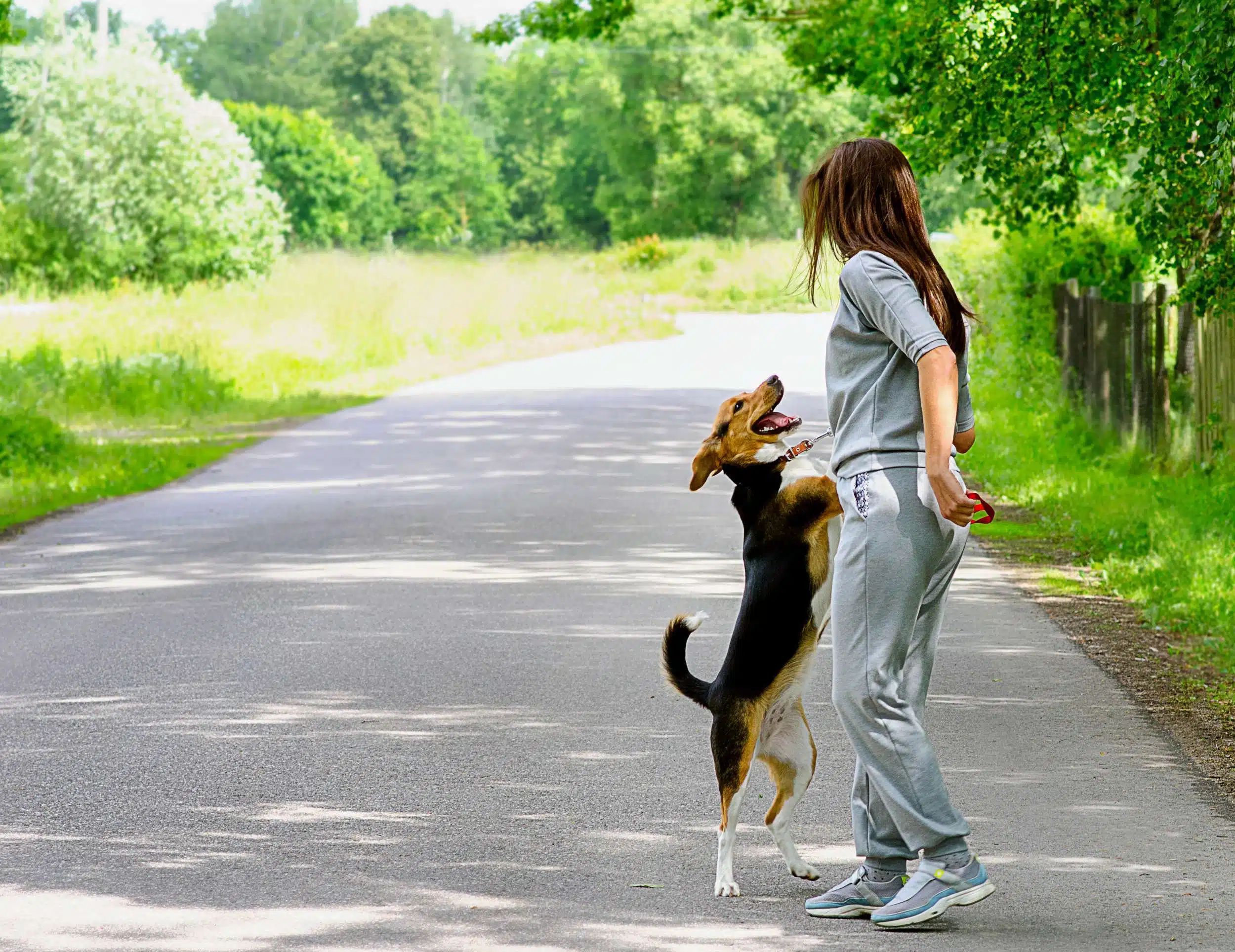Dogs are treasured pets that provide joy, comfort, and amusement to our lives. If you are searching for a way to interact with your furry buddy while keeping them fit and interested, look no further than the classic game of frisbee or disc. Not only is it fun to watch, but it is also a great way to exercise your furry friend and keep them mentally stimulated. In this beginner’s guide, we will provide you with a step-by-step overview of how to teach your dog to catch a frisbee. No need for a professional dog trainer, so grab your disc dog and get ready to play disc with your four-legged bestie!
Choosing the Right Frisbee
Are you ready to teach your dog to catch a frisbee? Before you start, it is essential to pick the right disc for your dog. Below is an overview of the different types of frisbees commonly available in pet stores.
● Classic Frisbees: This is the most common type of frisbee, but it is not the best option for dogs. Classic frisbees are made of hard plastic and can break easily, posing a choking hazard for dogs. But do not worry, there are other frisbees that are far better for your pet.
● Soft Frisbees: These frisbees are made of rubber or foam, making them gentle on your dog’s mouth. Soft frisbees are also durable and can withstand your dog’s sharp teeth. Plus, they come in a range of designs and hues, making them a fun accessory for your frisbee training sessions.
● Flying Discs: They are flying objects that are similar to classic frisbees, but are made of softer materials like nylon or cloth. These discs and other disc frisbees are more flexible and less likely to shatter. While they may not fly as well as classic frisbees, they are still a great option for your furry friend.
When choosing a frisbee, the size and weight matter. You want a frisbee that is appropriate for your dog’s breed and size, as it could be challenging for your dog to catch if it is too small or too large. Also, the disc should not be too heavy or too light. The material is also important. Look for frisbees made of durable materials that can withstand your dog’s sharp teeth.
Pre-Training Preparations
Before you start teaching your furry friend how to chase and catch and drop a disc, let us make sure you have got all the pre-training preparations down pat.
Warm-up Exercises
Just like humans, dogs need to warm up before engaging in any physical exercise. Take your dog for a short walk or play a game of fetch to get their muscles warmed up and ready to go. Stretching exercises can also be beneficial. Try gently massaging your dog’s legs and hips, or encouraging them to do some gentle stretches like downward dogs. These warm-up exercises will help prevent injury and ensure your dog is ready to learn.
Teaching Basic Commands and Cues
Begin by using basic verbal cues like “sit,” “stay,” and “come.” These will be the building blocks for more advanced disc training commands like “fetch,” “drop,” and “catch.” It is also helpful to train to use hand signals in addition to verbal commands, as this will help your dog learn more quickly.
Creating a Positive Learning Environment
Make sure the area you pick is calm and distraction-free, as you do not want them to get sidetracked by other toys, people or animals. Employ positive reinforcement strategies like treats and praise, to motivate your dog to learn. Remember to keep training sessions brief and regular, to help your dog stay interested.
Basic Frisbee Training
Now that you and your furry friend are warmed up and ready to go, it is time to dive into the basics of frisbee dog training.
Introduction to Frisbee
First things first, introduce your dog to their new favorite toy, the frisbee. Show your dog the frisbee and let them sniff it to get familiar with it. You can even give the disc a gentle toss so your dog can see it fly through the air. If they seem uninterested, try using it as a food bowl for a few days. Once your dog is comfortable with the frisbee, it is time to move on to the next step.
Teaching Your Dog to Catch a Stationary Frisbee
Teaching your dog to catch a stationary frisbee is a fantastic way to get them started. Start by holding the disc out in front of your dog at nose level. Encourage them to take it gently in their mouth with a treat or lots of praise. Repeat this several times until your dog is comfortable catching the frisbee from a stationary position.
Throwing the Frisbee for Your Dog to Catch
Now is the time for the real fun – throwing the frisbee for your dog to catch. Start with short, low throws to build your dog’s confidence. Use a lot of enthusiasm and encouragement to get your dog excited about chasing after the frisbee. Gradually increase the distance and height of the throws as your dog becomes more skilled.
Retrieving the Frisbee
Retrieving the frisbee is the final step in basic frisbee training. Encourage your dog to chase and bring the frisbee back to you by using treats or a toy as a reward. Avoid engaging in tug of war. If they do not release, withhold the treat.
Advanced Frisbee Training
Now that you and your dog have mastered the basics of frisbee training, it is time to kick things up a notch and move on to some advanced frisbee training.
Running and Catching
Running and catching is the next step in frisbee training. Start with short runs and low throws and gradually increase the distance and height of the throws. Encourage your dog to run after the frisbee and catch it in the air. Remember to keep the throws fun and challenging, but not too difficult for your dog to catch.
Jumping and Catching
Start by throwing the frisbee at a low height and encourage your dog to get excited and jump up and catch it in its mouth. As they become more excited and skilled, increase the height of the throws and challenge them with different types of catches, like catching the frisbee from behind or sideways.
High-Flying Disc Techniques
High-flying disc techniques are another fun way to challenge your dog’s frisbee-catching skills. These techniques involve throwing the frisbee high into the air and performing various catches and maneuvers. This takes a lot of practice and skill, so start with low throws and work your way up to higher ones.
Tricks and Advanced Maneuvers
Last but not least, let us dive into tricks and advanced maneuvers. These include moves like flipping, twisting, and catching the frisbee behind their back. These tricks require a lot of practice and patience, so take it slow and always keep it fun for your dog.
How to Teach Your Dog to Catch a Frisbee; Troubleshooting the Common Issues
Even with the best preparation and training, sometimes things do not go as planned when teaching your dog to catch a frisbee.
One common problem is that your dog may not show interest in the frisbee at all. This could be due to a lack of motivation or a lack of understanding of what you want them to do. To overcome this, try using a more enticing reward, like their favorite treat or new toy first, and gradually build up their interest in the frisbee by using it in playtime and training sessions.
Another problem is that your dog may not catch the frisbee or may drop it immediately after catching it. This could be a result of poor timing or coordination. To overcome this, start with low throws and work on basic catching skills before moving on to more advanced techniques. Also, make sure to use positive reinforcement and rewards to encourage your dog to keep trying.
Sometimes your dog may be too aggressive in their approach to catching the frisbee, jumping too high, or lunging too hard. This could be dangerous for both you and your dog. To overcome this, practice control exercises like “wait” and “leave it” and work on your dog’s impulse control.
Finally, your dog may be hesitant to catch the frisbee because they are afraid of getting hit in the face or mouth. This is a common fear among dogs. To overcome this, start with low throws and gradually work your way up to higher ones. Also, consider using a softer frisbee or a training disc until your dog is more confident in its catching abilities.
Safety Considerations When Teaching Your Dog to Catch a Frisbee
While frisbee can be a blast, there are some risks to consider to keep you and your furry friend safe.
One potential risk is injuries that can come from playing with a frisbee, including cuts and bruises from the sharp edges of the disc, and muscle strains and joint sprains from the quick movements required to catch and retrieve the frisbee. Other risks can include dehydration from playing in the sun or paw pad injuries from rough or hot surfaces.
To keep your dog safe while playing frisbee, there are a few things you and most dogs can do.
● Choose a soft and lightweight frisbee that would not cause harm if it accidentally hits your dog.
● Play on a soft and even surface like grass or sand to prevent joint and paw pad injuries.
● Warm up your dog with some gentle exercises and stretching before starting the game to prevent muscle strains and joint sprains.
● Gradually train and build up your dog or puppy’s endurance and physical conditioning with shorter play sessions.
● Make sure your dog has access to plenty of water so it can stay hydrated while playing.
● Always supervise and train your dog while playing frisbee and be mindful of their physical limits.
By adhering to these play frisbee safety tips, you can enjoy frisbee play without worrying about your dog getting hurt. So, grab your frisbee and have fun.
Wrapping Up; How to Teach Your Dog to Catch a Frisbee
Now that you have all the tools, toys and techniques to teach your dog how to catch a frisbee, it is time to get out there and have some fun. Remember to start slow and be patient with your dog. With consistent practice and positive reinforcement, you will soon be amazed at how far your furry friend has come in their frisbee-catching skills without the need or cost of a professional dog trainer.
But do not stop there! Once your dog has mastered the basics, challenge them with a few tricks and advanced techniques and tricks to take their frisbee skills to the next level. And always keep safety in mind to ensure that your dog stays happy, healthy, and injury-free.
So what are you waiting for? Grab your frisbee, head outside, throw and let the fun begin!














Get involved!
Comments